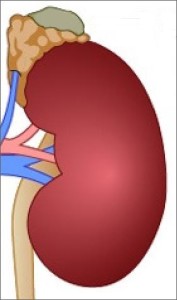From magic beans, to machines

We all know the story of Jack, who lived in poverty with his widowed mother, foolishly traded their only cow for a handful of beans, climbed the enormous plant that sprouted overnight from those beans, and came back with a fortune (which, we are assured, was rightfully theirs to begin with).
That’s nonsense, of course. I’m not sure such tales are even being passed along to children these days, the way they were in times past. They’re based on a world view so incompatible with our own as to be embarrassing.
On the other hand, in a recent online article Richard Fernandez argues that we may be more inclined than previous generations to put our faith in something akin to magic.
“Two hundred years ago,” he says, “the average person probably understood virtually everything he encountered in daily life. Today the average person is surrounded by objects far more complex than the Apollo 11 guidance computer.” Most of us do not even begin to understand how those objects work. “Technology has allowed the burden of intelligence to be shifted away from the user to the machine. As a result people routinely use tools they barely understand, implicitly believing they will work.”
Fernandez presents this as a potentially scary turning point in the progress of civilization. He cites the most famous of Arthur C. Clarke’s Three Laws: “Any sufficiently advanced technology is indistinguishable from magic.” And what is magic if not wish fulfillment? Our gadgets and other resources have empowered us to the extent that wanting something is now step one. Step two is having it.
So what if attainment comes via mechanisms we don’t entirely understand!
I must have been circling this idea a few months ago when I wrote a facetious user guide for a Wish Fulfilling Device. (At the time I saw that exercise as a writing sample, in case a potential employer wanted to see what I could do; my real technical writing was all proprietary.)
But this outlook has affected my thinking for a very long time. It goes back at least to the birth of my son Joseph.
When his doctor presented the first clue that something might not be right with him, I immediately thought modern medical technology surely had an answer. If we had a problem, my faith in science held that some specialist, somewhere, would know what to do. Anyone trying to say otherwise was just ignorant. That belief started my family down the path described in my memoir, What About the Boy?
The ultimate thrust of the Fernandez article is socio-political. He’s writing about people who suppose our advanced society liberates them from causality, i.e., enables them to avoid the consequences of having done “stupid” things. There’s no need to narrow his focus in that way. As far as I know, the challenge confronting my family was not the result of stupid choices. Causality? A neurologist told me Joseph’s affliction, whatever it was, “just happened.” More than three decades later I still haven’t heard a better explanation.
So I wasn’t trying to dodge responsibility. But I did assume the black box of modern capability could spit out the desired remedy.
When it didn’t, I looked at other black boxes. Without going into details, I became the poster child for the errors in judgment that Fernandez ascribes to those trusting in the new magic.
On the other hand, perhaps my fixation was due less to living in our modern technological society than to stubborn refusal to accept a bad outcome for my boy. I would have grabbed any straws in sight.

As I’ve noted previously, Joseph’s developmental problems have now been joined by the complications of metastatic melanoma. Black box or not, medical technology has done wonders in preserving the quality of his life since that diagnosis. I have the greatest respect for his doctor and all the other good medical people who’ve kept him going this long.
That said, he still has cancer. Also, it is now showing up on one of his adrenal glands. The adrenals sit on top of the kidneys. In this illustration, the tumor is represented by the gray blob at the top. In reality, the tumor is bleeding. The kidney, of course, is the reddish bean shape.
Looks like we could still do with some magic beans.